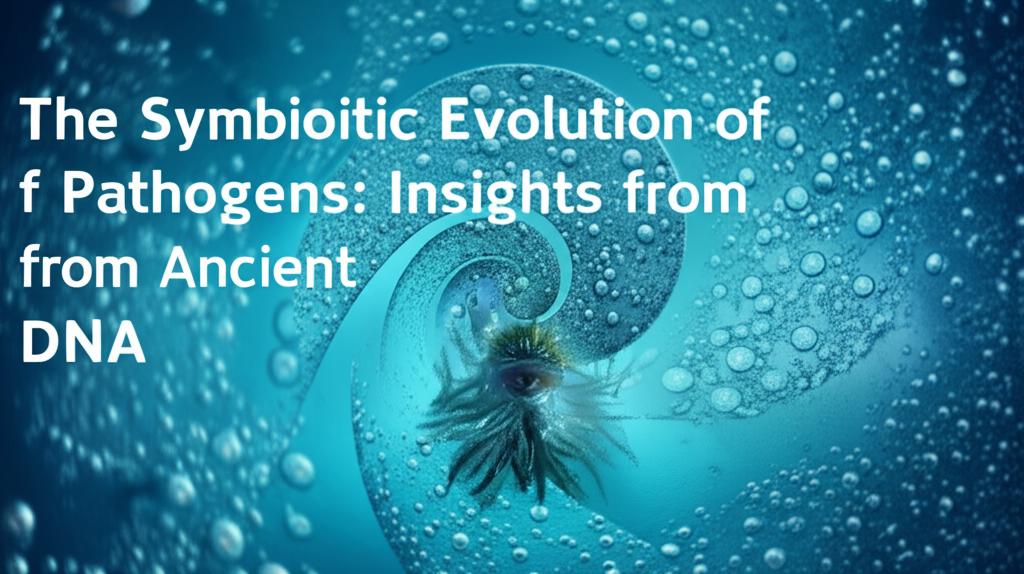Unearthing the millennia-old secrets held within ancient DNA is revolutionizing our understanding of how pathogens and their hosts have evolved together. This isn't just a history lesson; these ancient genetic breadcrumbs offer profound insights into the diseases that plague us today and those that might emerge tomorrow.
Imagine a microscopic arms race spanning thousands, even millions, of years. As humans and animals adapted to their environments, so too did the bacteria, viruses, and other pathogens that lived on and within them. For a long time, our knowledge of this intimate dance was limited to what we could infer from skeletal remains or historical accounts. But the game has changed. Advances in ancient DNA (aDNA) recovery and sequencing now allow scientists to directly access the genetic code of these ancient microbes, painting a vivid picture of their evolutionary journey.
Time Capsules of DiseaseResearchers can now extract and analyze pathogen DNA from a variety of archaeological sources, including bones, teeth, fossilized feces (coprolites), and even preserved tissues from mummies. These time-stamped genomes are invaluable. They allow scientists to calibrate the "molecular clocks" of modern pathogens, providing more accurate timelines for their emergence and spread. This means we can pinpoint when certain diseases first appeared, how they diversified, and how their virulence – their ability to cause disease – has changed over millennia.
For instance, studies on Yersinia pestis, the bacterium responsible for plague, have traced its evolution from a less virulent gut pathogen to the devastating agent of pandemics like the Black Death. Ancient DNA has revealed that this bacterium acquired key virulence factors over time, transforming its ability to infect and spread. Similarly, aDNA research has shed light on the long histories of tuberculosis, leprosy, and even viral infections like Hepatitis B, sometimes revealing extinct lineages and surprising transmission events.
A Two-Way Street: Co-evolution in ActionThe story isn't just about how pathogens change; it's also about how they've shaped us. Infectious diseases have been a powerful selective pressure throughout human (and animal) evolution. Our immune systems have evolved in response to the constant threat of infection, and aDNA research is helping us understand this co-evolutionary dance. By comparing ancient human genomes with the pathogens they carried, scientists can identify genetic adaptations that may have conferred resistance to past diseases. Interestingly, some of these ancient adaptations, while beneficial in the past, may now predispose modern populations to autoimmune disorders, highlighting the complex interplay between our genes and our ever-changing microbial landscape.
Beyond Humans: A Wider PerspectiveThe insights from ancient pathogen DNA extend beyond human diseases. Studies on animal remains and even preserved plant material are revealing the evolutionary histories of pathogens affecting livestock, wildlife, and crops. For example, research on ancient rodent middens has provided evidence of papillomavirus infections dating back 27,000 years, suggesting a long co-evolutionary history between these viruses and their rodent hosts. Understanding these long-term interactions in natural systems can provide a broader context for how pathogens emerge and adapt.
Learning from the Past to Inform the FutureThe study of ancient pathogen DNA is more than an academic pursuit; it has real-world implications. By understanding how pathogens have evolved in response to changes in host populations, climate, and human behavior (like the advent of agriculture or increased global travel), we can better predict and prepare for future disease threats. For example, research suggests that the rise of zoonotic diseases – those that jump from animals to humans – may be linked to periods of increased livestock domestication.
Furthermore, the identification of ancient antimicrobial resistance genes in bacteria from permafrost samples serves as a stark reminder that resistance mechanisms are not solely a modern phenomenon and can re-emerge.
The field of ancient pathogen genomics is rapidly advancing, fueled by ever-improving DNA extraction and sequencing technologies. As we unearth more genetic ghosts from the past, we gain a clearer understanding of the intricate and ongoing symbiotic (and often antagonistic) relationships between hosts and their pathogens. These ancient echoes are providing crucial clues to navigate the challenges of infectious diseases in our interconnected world, reminding us that to understand the present and anticipate the future, we must often look deep into the past.

